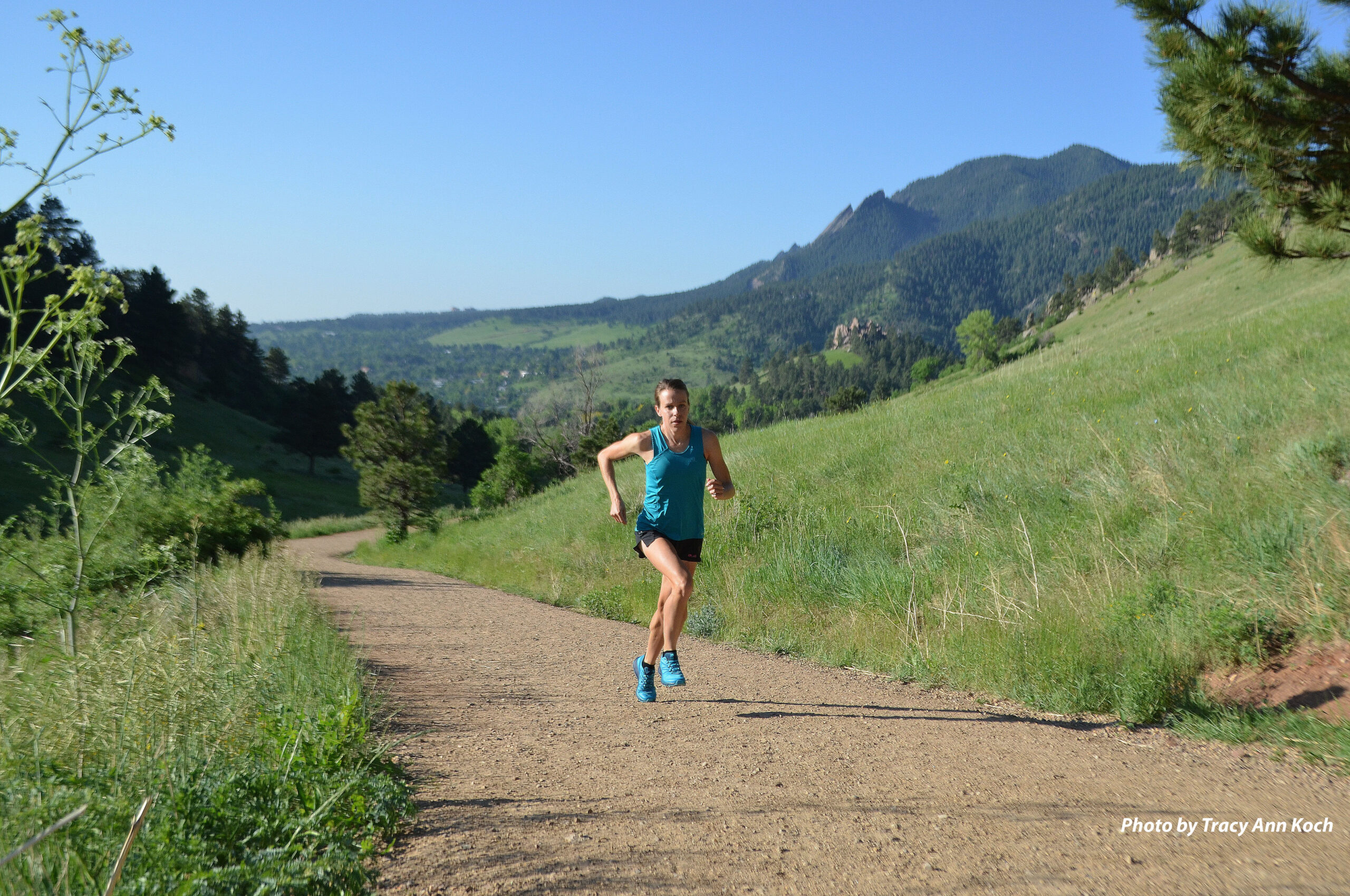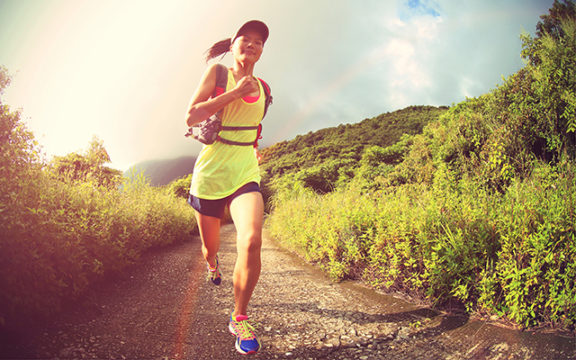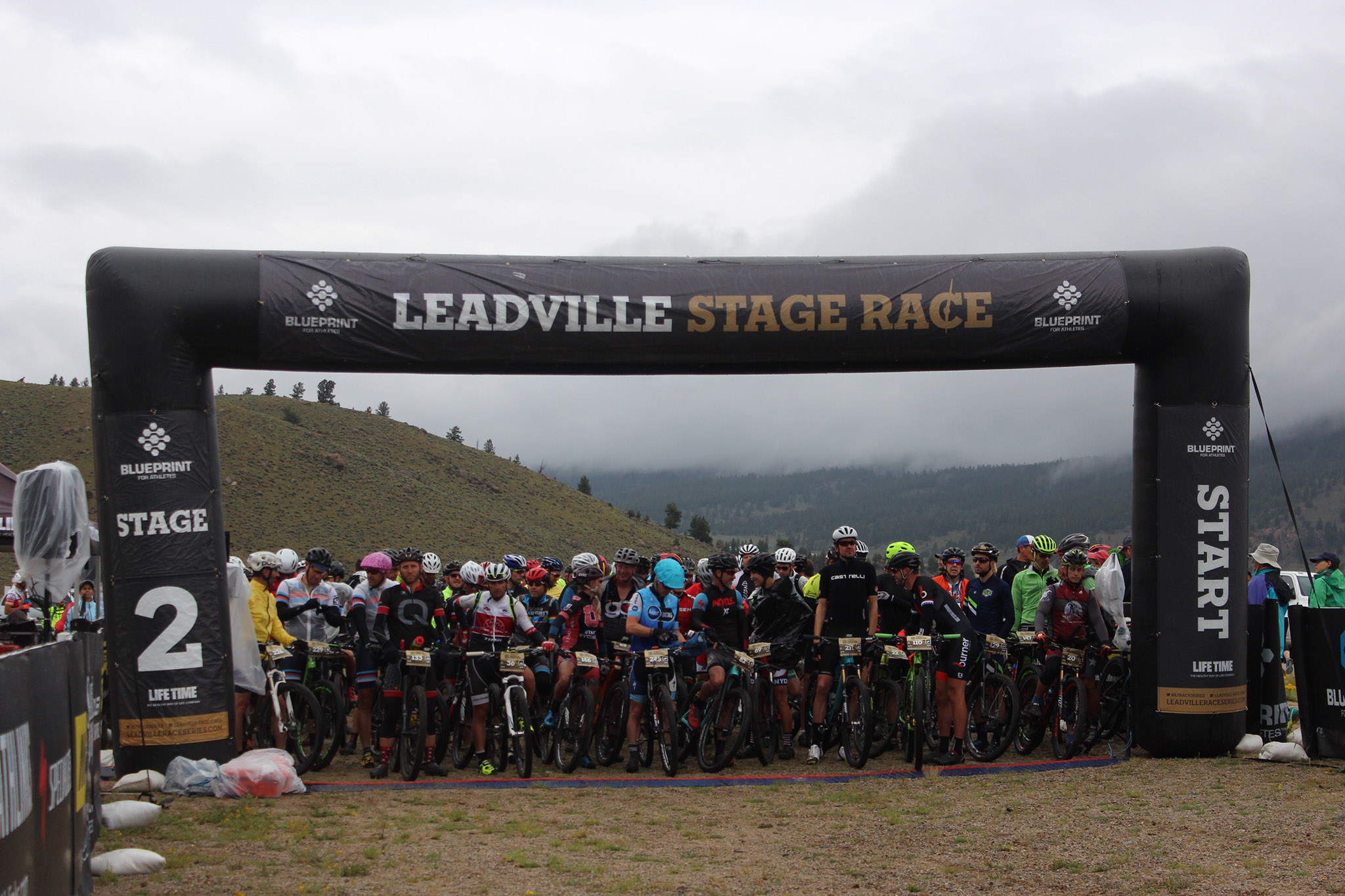With the Leadville Trail 100 MTB and Leadville Trail 100 Run presented by La Sportiva quickly…

Addie Bracy’s “My First 100 – Lessons Learned for Leadville”
I moved to Colorado in 2012 with the wide-eyed wonder of a track-running, southern girl who had never seen anything like the Rocky Mountains. The rugged peaks were something that served as a picturesque backdrop to my track workouts, and the trails were the perfect place to take my dog for evening strolls. But, there was no part of me that ever considered running, much less racing, over such terrain. My second summer as a state resident, I took a last-minute camping trip to Twin Lakes in Leadville and hiked Mt. Elbert. I didn’t know it at the time, but during that hike something in me changed and a seed was planted. Over the next few years I started spending more and more time in the mountains, and two years ago I officially traded in my spikes for my Salomons. Not long ago, that seed finally sprouted and it hit me – “I want to run the Leadville 100. I need to run the Leadville 100.” I’m not a stranger to competing and I have a solid number of trail races under my belt, including two 50-milers. But, the 100-mile distance certainly still feels just as daunting to me as ever. As I’ve been training the last several months and as we get closer and closer to race day, there are some lessons I’ve learned along the way.
Chafing is Real
I’ve planned and prepared for many things when training, but chaffing has never been one of them. During the last few months of training and racing, I’ve chaffed in places I didn’t even know I had. One major lesson I have learned in ultra training is that the comfort of your gear is imperative. It’s important to spend a lot of time running in the exact stuff you plan to race in so that you can make any necessary adjustments before the big day. A little blister or raw spot may not seem like a big deal, but in the midst of a long, long race it will soon be the only thing you can think about.
You’re Training for an Eating Contest
You’ll hear over and over again that an ultra is an eating contest with some running mixed in, and it couldn’t be more true. When I set out for super long training runs, a huge focus and emphasis for that day is to just practice eating a lot and learning what my stomach can handle. It’s just as important, if not more important, than training for the pace and distance of the race. Race day nutrition has always been on my mind, but certainly not to the extent that it is now. Try different things and see what sits best with you. I’ve learned that my secret weapon is Red Bull and Snickers bars, so that’s what I have been relying on most. But, it’s crucial to figure that out before you get to the start line so that you’re not leaving anything to chance once the gun goes off.
Just Keep Moving
Previously, my training was dedicated to hitting certain paces and involved a lot of specific workouts and intervals. Now, I just focus on learning to keep on moving regardless of how tired I am. You can get creative with training for that and have some fun with it. One way I’ve made more of an adventure out of long training days is by planning a multi-modal journey for the day that covers a lot of ground by starting on my mountain bike. I’ll bike for an hour or two to a destination, then cover some ground on foot, then bike back home. Having a planned route and a lot of ground to cover makes me feel excited to be out there for a full day and the bike helps break it up into an endeavor that’s easier to comprehend. Do whatever you have to do to get used to moving for a long time and it doesn’t have to (and, probably shouldn’t) just involve running a lot. I’ve also had to learn how to walk. Coming for a track and road marathon background, walking in a race seemed just as bad as using your hands in soccer. But, in a 100-miler learning to use walking strategically can save the day, so factor it into your training.
Get Used to Being Uncomfortable
As far as I can tell, ultra running is mostly about just being extremely uncomfortable for a really long time. Your feet hurt, your stomach feels off, you’re chafing in weird places, your muscles are throbbing, and you just feel all around crappy. Get used to it. The best way I’ve been able to deal with this is just to accept and embrace it. It’s almost humorous at times what we, as ultra athletes, are trying to do. So, laugh off the blisters and the vomiting and remember that this is supposed to be fun.
Be Adaptable
As a former track athlete, I was used to being very structured in both my training and in my thinking. Race day was a very scheduled and calculated event in which, in an ideal world, everything went smoothly, conditions were perfect, and you felt effortless. None of those things will EVER be a reality in a 100-miler. Things most certainly will not go smoothly, conditions are rarely perfect, and effortless is guaranteed not to be a feeling that comes up that day. So, be prepared for anything to happen and don’t let it throw you off when it does. Expect things to pop up and be ready to adapt if they do. The best racers are the ones that are the smartest and most strategic. That means preparing for every scenario and when plans change mid-race, go with the flow and don’t let it drain your mojo.
These are just some of the lessons that I’ve learned over the last few months. I’m sure that I’ll walk away from my first 100-miler having learned quite a few more. They say when you run your first 100 you don’t walk away from it the same person, and I can’t wait for that transformation. For all of those out there who are also preparing for the Leadville 100 in August – We’ve got this!
If you’d like to follow Addie’s journey, you can get updates on her blog: http://www.peaktraining.online/blog and Instagram account: http://instagram.com/addiebracy/.



